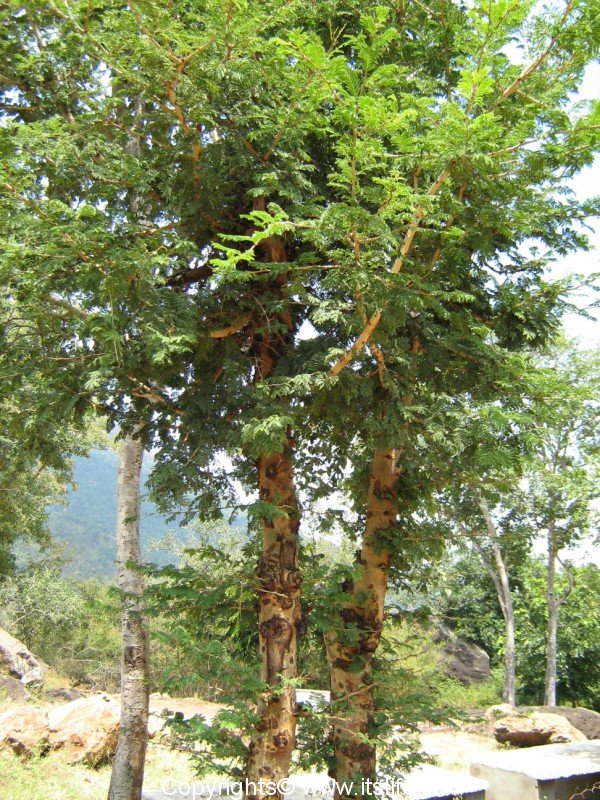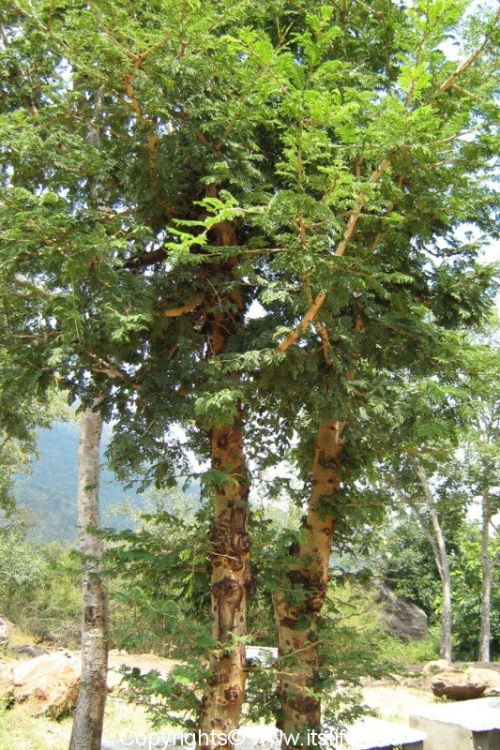The botanical name of this tree is Prosopis spicigera. In Sanskrit it is known as Shami Vruksha.
Banni tree is found in dry and arid regions at low altitudes. This tree is widely grown in North West India and the plains of South India. It is also found in Pakistan, Afghanistan, Iran and Saudi Arabia. It is a medium sized tree that can grow up to a height of 12 meters. It is green throughout the year.
The leaves are small and delicate arranged next to one another, which are used for cosmetic purposes. The bark of the tree is used to cure many diseases like asthama, dysentery etc., and the it is also suitable for firewood and charcoal. The farmers retain this tree in the fields as they increase the yield of crops growing close to it.
Religious importance
This tree is also known as Shami tree and is very sacred to Hindus. This tree comes into prominence during Dasara festival. Every Hindu warrior before going for war would offer prayers to Banni tree and then proceed. They believed that they would emerge victorious in the war. The legend behind is rooted in the great epic Mahabharatha. When Pandavas were in exile for 14 years, they had to spend one-year incognito. During this period they had to hide their precious weapons lest they give away their identity. They chose the Shami tree to hide their weapons. After a year, they came back to the tree and found their weapons intact. They worshiped the tree and asked for power and victory in the ensuing battle between the Pandavas and Kauravas. Pandavas won the battle and hence it is believed that the Banni tree gives power and victory to those who pray to it.
Thus on Vijayadashami day people exchange the Banni/Shami leaves and greet and wish each other. This custom is followed in North Karnataka and Maharashtra.
In Mysore, the Dasara procession would reach Bannimantap, and the Maharaja would perform pooja/prayer to Banni tree and carry a branch of this tree back to his palace.
Banni leaves are offered to Lord Ganesha during 21 Patra (leaves) Pooja. ” Om Ibhavaktraya namaha Sami Patram Samarpayaami” is chanted while offering this leaf to the Lord.
The Bishnoi community in Rajasthan considers this tree as sacred because it has proved to be a valuable source of food to them.
Planting
The seeds can be planted directly. The tree needs direct sunlight.
For the Ramayana story regarding Banni tree click here (Kannada version). Click here for English Version.



